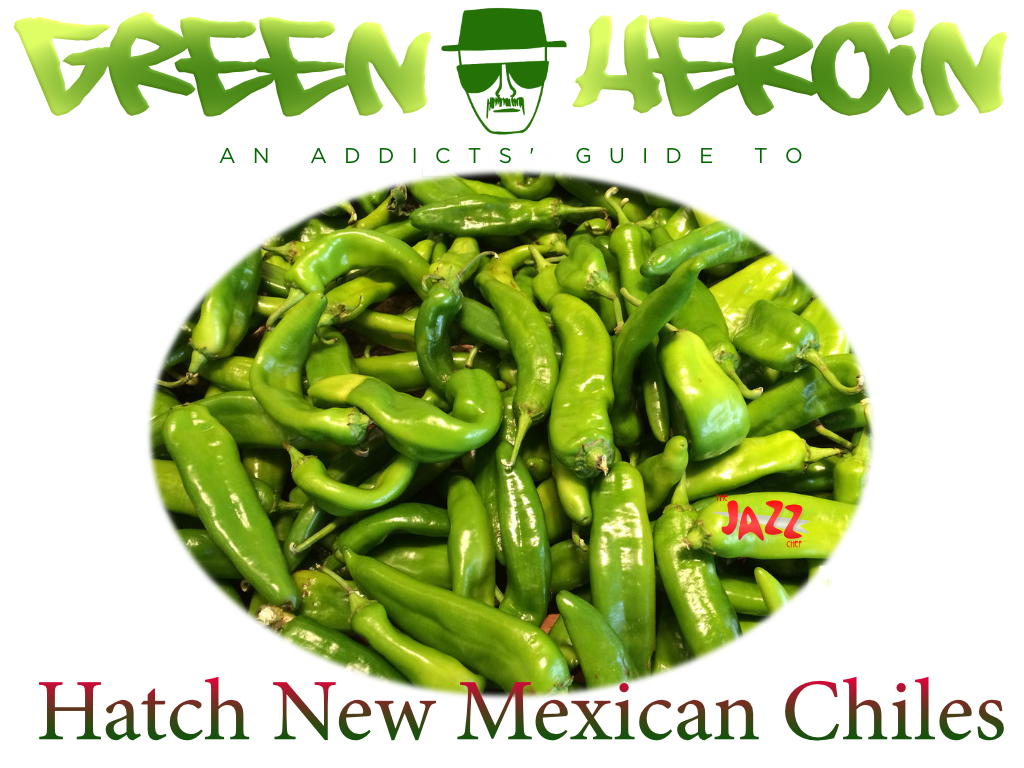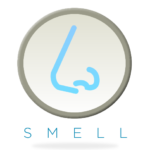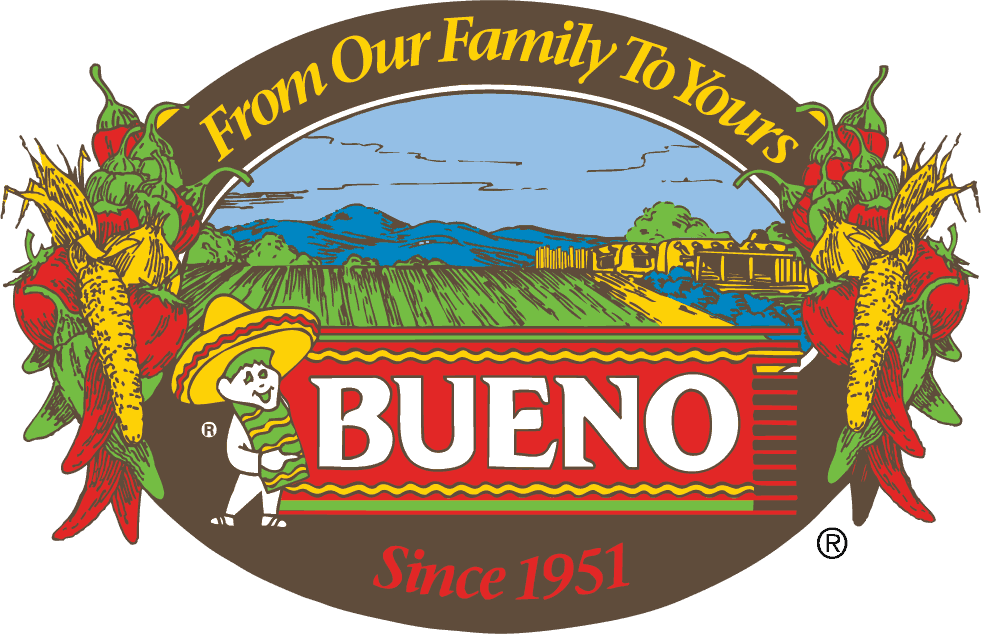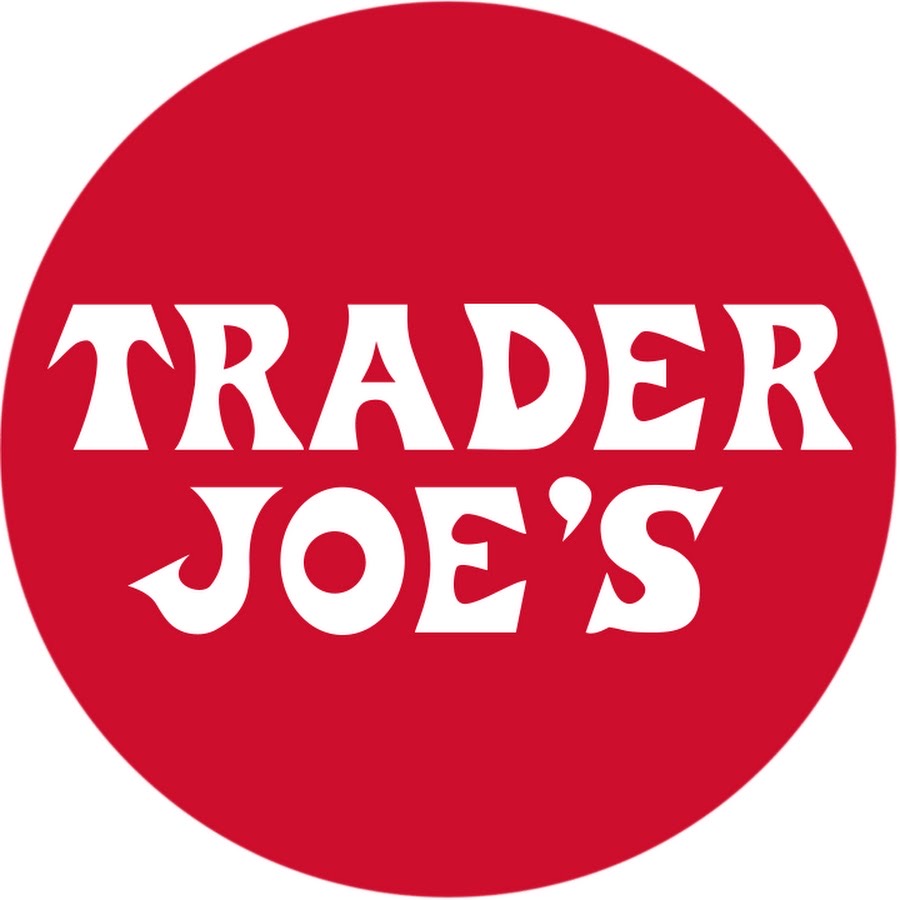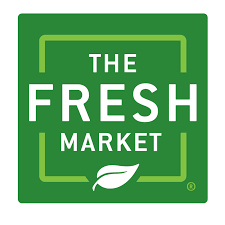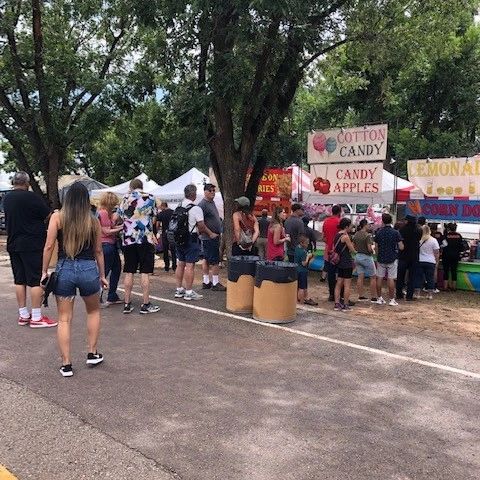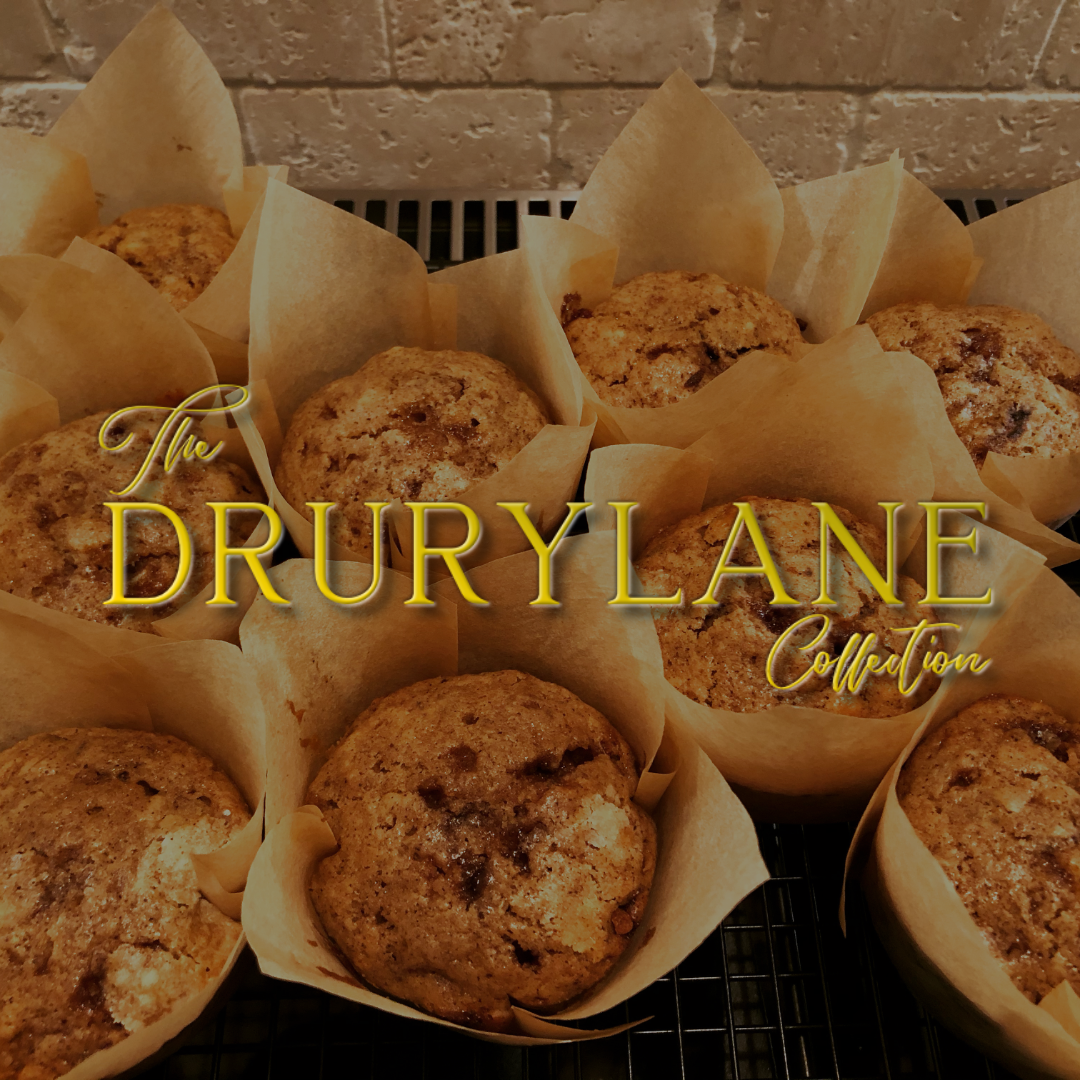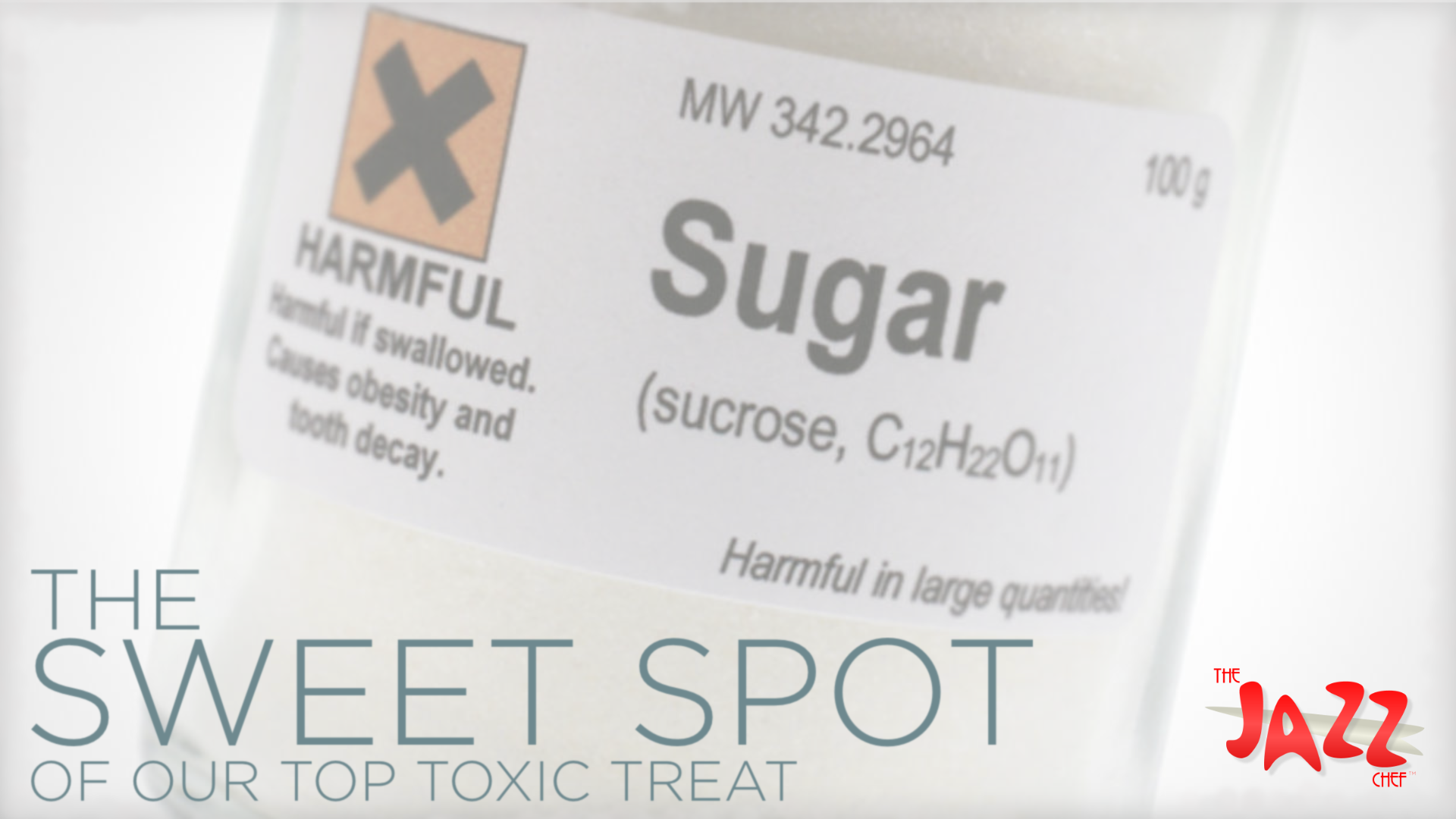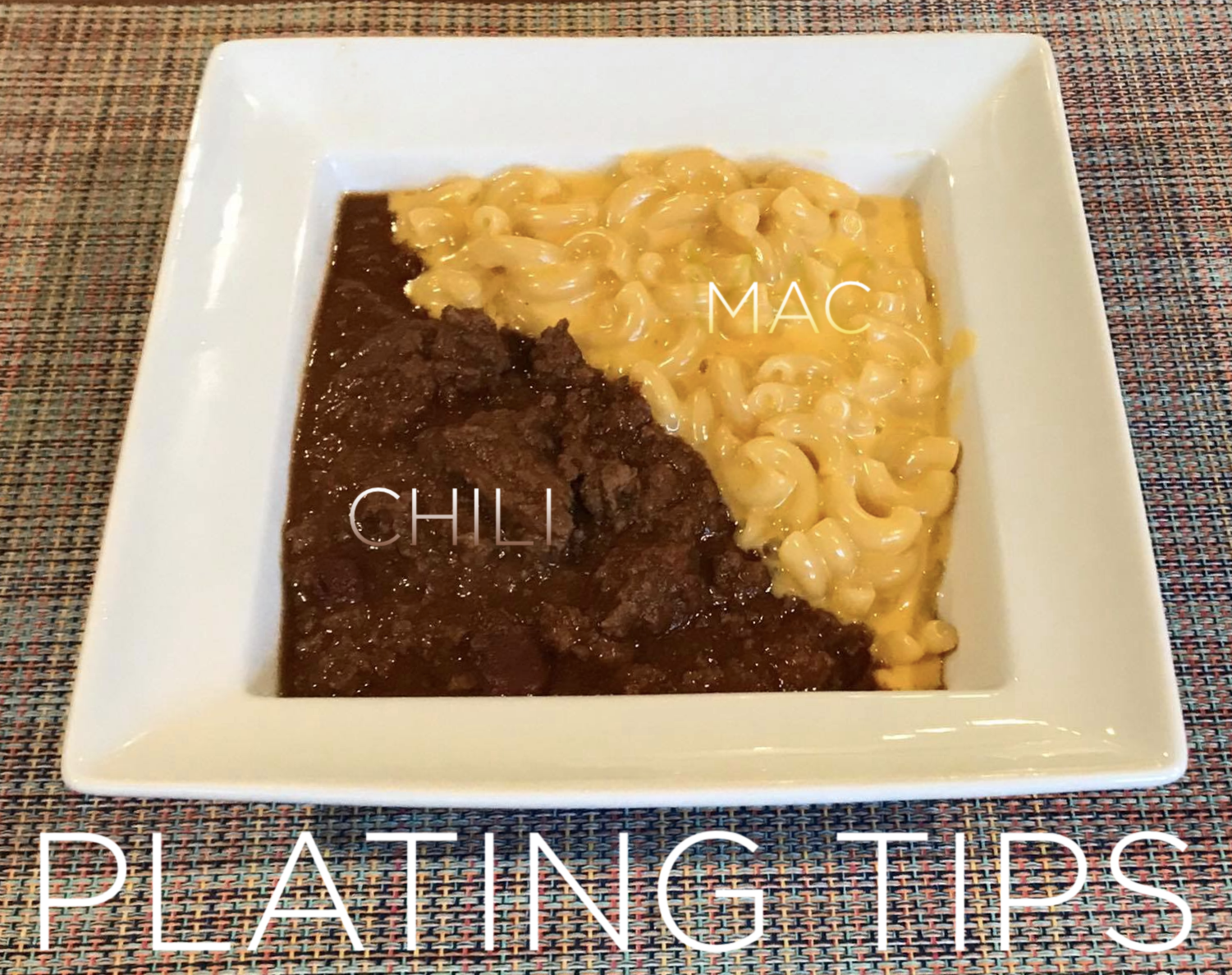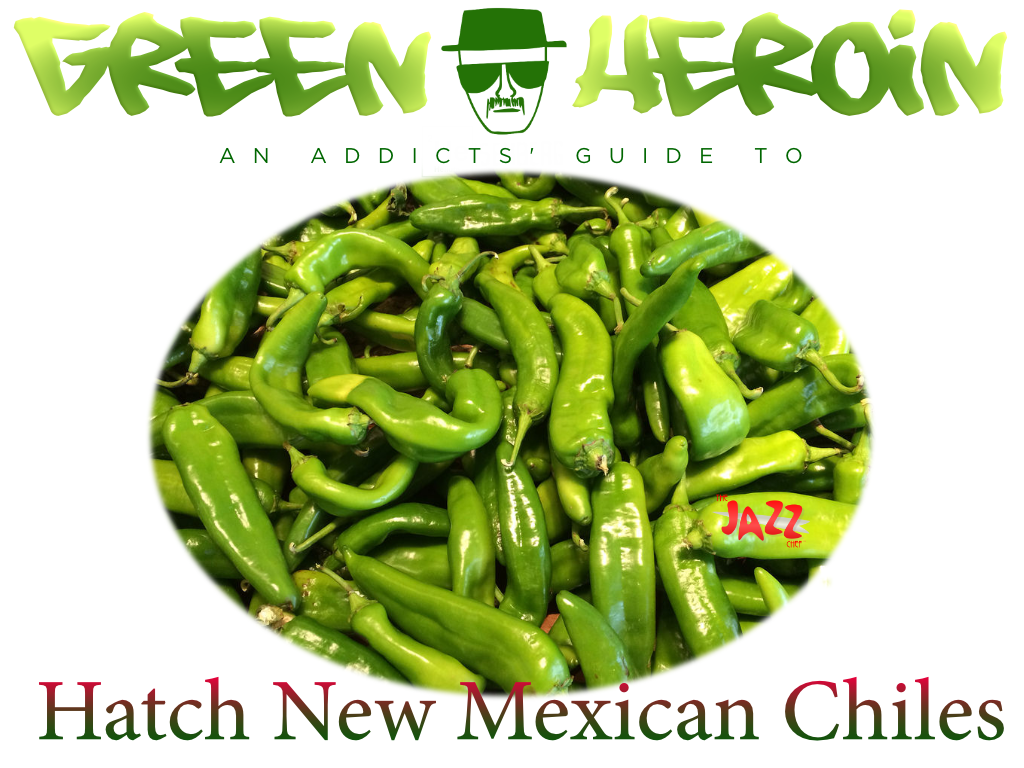
Updated 2023.05.12
THE COOK’S TOUR
I have something to confess: I am horribly, horribly addicted… To Hatch green chiles! I’m not alone. There are hundreds of thousands of New Mexicans (That square state next to Arizona that the weather man stands in front of while pointing at California and Chicago.) who as badly hooked as I am.
My only beef with the TV show Breaking Bad, set in New Mexico, where I used to live for many years, was that Walter White was a high school chemistry teacher cooking drugs. A Hatch chile grower in New Mexico would be far more believable. Hatch chiles may be one of the most habit-forming foodstuffs on Earth!
Since the introduction of the “Big Jim,” one of the longest Hatch chiles, in the 1970’s, the demand for them, in New Mexico, across the Southwest, and in stores lucky enough to get a little of the fresh crop, every Fall, Green chile addiction has become a part of our culture. There are now more than 20 different cultivars of New Mexican chiles, with about 8-10 being regularly grown in Hatch, and more than a dozen that are grown in the rest of the state’s agricultural zones.
Try Hatch green in one of my recipes. You’ll understand why even McDonald’s puts a Hatch side on their menu in many of their New Mexico locations! Oh, and if you know anyone starting up a HatchAnon 12-step program, don’t tell me!
SENSORY
Hatch chiles have amazing taste and aroma. Their flavor that is hard to describe accurately. Spicy, savory, they are unlike any other chile. They are often-mistaken for their cousins, the Anaheim, but their aroma alone tells you the difference, and can put the broadest of smiles on the faces of New Mexicans, and those fortunate enough to have developed a Hatch habit.
New Mexico green chiles, including Hatch, are unusual, as they a “meaty” chile. It’s thicker than a Cubanelle, but not as thick as a bell pepper. They do have more of a bell pepper consistency, when cooked, but with both heat, and an amazing piquancy that comes from the specifics of the soil in which they’re grown. The Hatch Valley has all of the magic that makes for the perfect piquant pepper, with enough pop to tempt tastes from mild, to wild.
HISTORY
You might think that Hatch green chiles are ancient chiles. Chiles have long been part of the crops of the region, which was first settled in 9200 BCE.
They’re not.
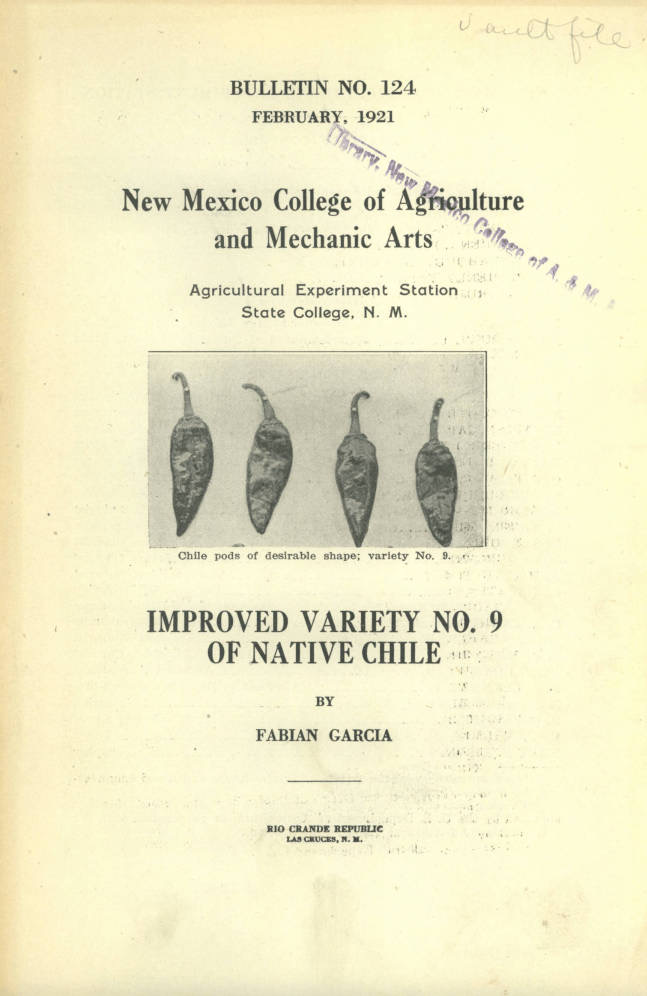
The Spanish marched into the region, in 1598. With them, chiles, from Mexico, Central, and South America, became a part of the food culture of the American Southwest.
In 1894, pioneer horticulturist Dr. Fabián Garcia, at Las Cruces College, and the New Mexico College of Agriculture and Mechanic Arts, began the cross-breeding of fourteen lineages of pasilla, colorado, and negro chiles, taken from across New Mexico, and Southern Colorado’s old Hispanic, and Native American Pueblo communities. The goal was to improve them as a cash crop, for canning, and export.
The first chile released in 1913 was called ‘New Mexico No. 9’.
Dr. Fabián García
Director of the Agricultural Experiment Station (AES) for thirty years, Dr. Fabián García, considered the “father” of New Mexico agriculture, was the first researcher to introduce new chiles to the agricultural business, in New Mexico. Chiles were unstable for size, and temperature, grown in the state. He worked with dozens of cultivars to arrive, in 1913, at the “No. 9”, a chile with a more fleshy pod, that tapered, which would be easier to peel, and can.


Dr. Roy Nakayama
Fast forward to the late 1960s. Dr. Roy Nakayama, another New Mexico State University agricultural scientist, picked up and expanded on the work of Dr. Garcia. Looking for a pepper that could survive mechanical harvesting, he cross-bred several cultivars, working with James A. Lytle, a farmer from the Hatch valley, to develop “Big Jim.” While it was a fail for automated harvesting, the taste, and size became a hit with chefs, cooks, and home cooks, all over New Mexico. Its popularity spread to the Southwest, and beyond. It also spawned the further development of both mild, and increasingly hotter Hatch peppers, that continues to this day.
Nakayama, working with other scientists, also developed:
- Española Improved
- NuMex 6-4
- NuMex R Naky, named for his wife Rose.
TRADITION
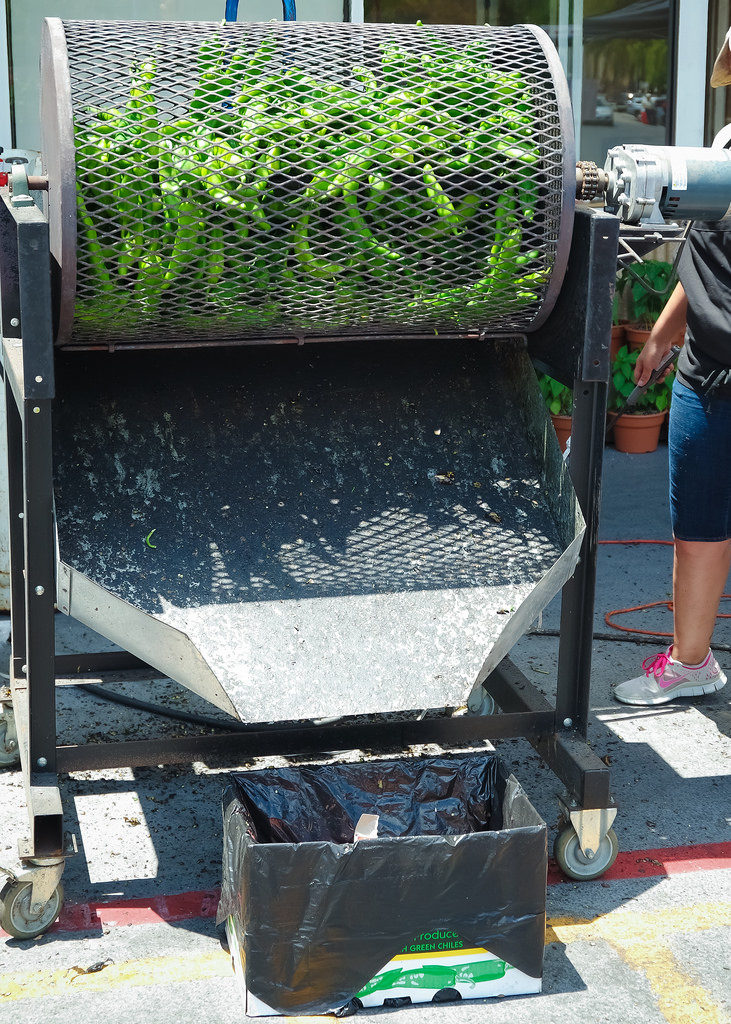
Every Fall, people may flock to the North, to see the leaves turn. I’ll take the wonders of late Summer, of Hatch chile roasting. It can be smelled driving down streets in towns around the northern part of New Mexico. into Southern Colorado.
I’ve never been down to Hatch, at that time of year. I lived in one of America’s oldest cities, though. In Santa Fe, New Mexico, you mark the end of Summer, watching pick-up trucks, loaded with green chiles. Farmers, in from Hatch, raise white E-Z Up tents, in parking lots along Cerrilos Road, the main thoroughfare through the newer part of town.
Out come their chile roasters. While it looks like the drum-burner units are all similar, most are custom-built marvels, hooked up to some serious propane heat to quick-roast the chiles.
Then the pickup trucks arrive, fresh off the farms. They back up, with sacks and sacks of green chiles from the Hatch valley.
The piquant, phenomenal smell of roasting these green gems wafts into the street. It’s the best advertising in the world. People grab their 10, 20, 30 lbs. Many have them roasted on site, unless they have roasters of their own, back at their homes.
Buyers take the roasted chiles home to process the soft, warm chiles into frozen packs, whole and chopped, that will last the family, until the next harvest.
THE ENCHANTED LAND
One of the things that makes New Mexico chiles unique are the valleys and mesas upon which they are grown.
Each growing region, Hatch, Sandia, Mirasol, Española, Lemitar, or Chimayó, have their own distinct soil conditions, and micro climates, the two key components that can change the flavor of any chile, even the same cultivar.
A “Big Jim” in Hatch, and another Big Jim in Sandia, are not going to taste the same. Of the many growing regions in New Mexico, the “magic” soil/climate particularly bless both Hatch, and Chimayó.
You could plant the seeds, anywhere else, and they still wouldn’t taste like Hatch green chiles. Why?
The special combination of nutrient-rich soil, intense summer sunlight, limited rainfall, relatively short growing season, and the coolness desert nights produce a meaty, piquant chile that now truly defines a lot of New Mexican cuisine.
THE WEATHER SECRET
A dry year in Hatch, means spicier chiles, I’ve found. Rainfall determines whether a particular Hatch hybrid is going to be spicier, or more mild.
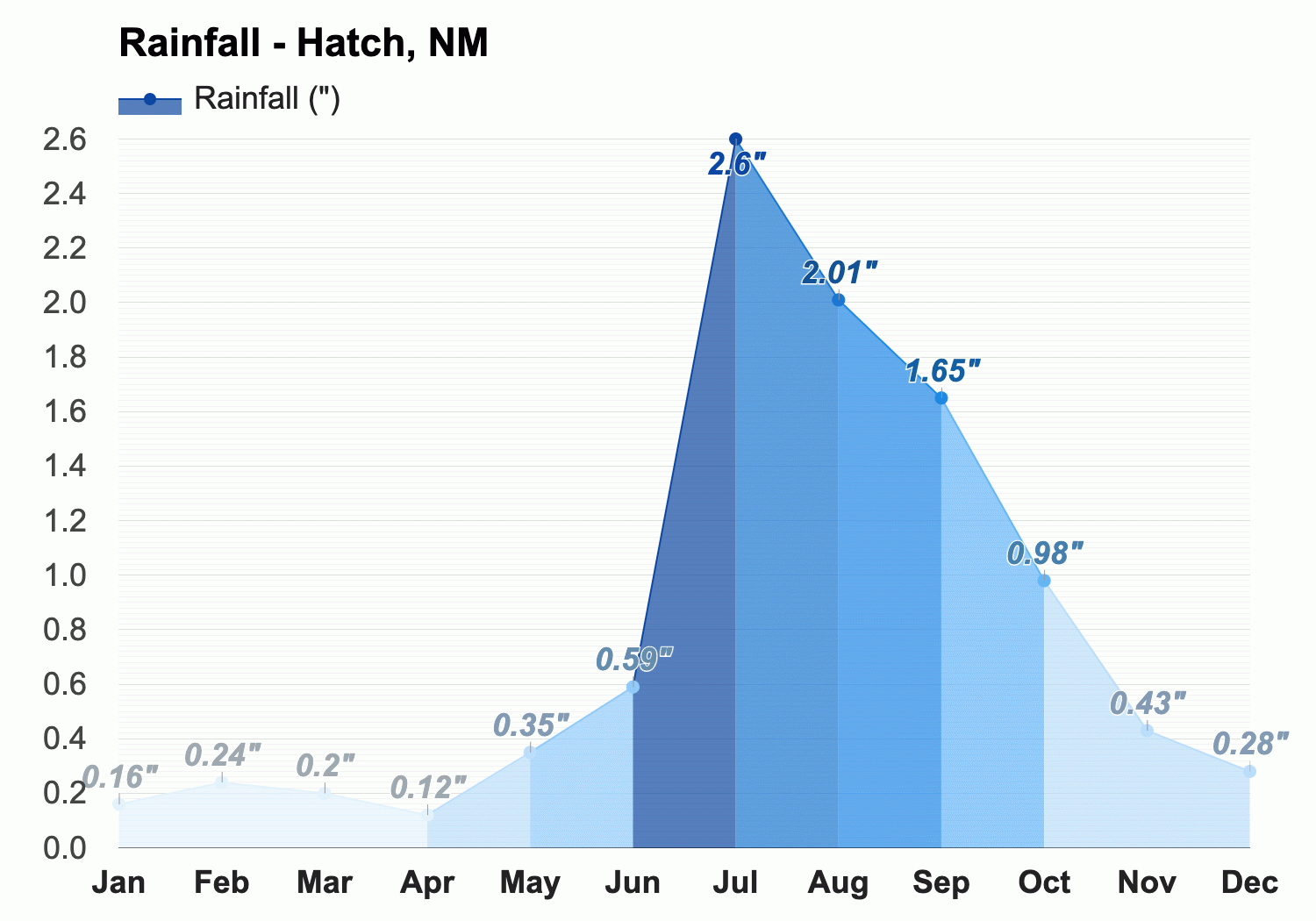
At 4,058 feet above sea level, Hatch is in a high altitude, and generally has a drier climate.
When this was written, the peak growing months were abnormally wet. The chiles were tamer. Last year, the rain, and heat with both within “normal” range. The chiles were at the higher end of their spice range.
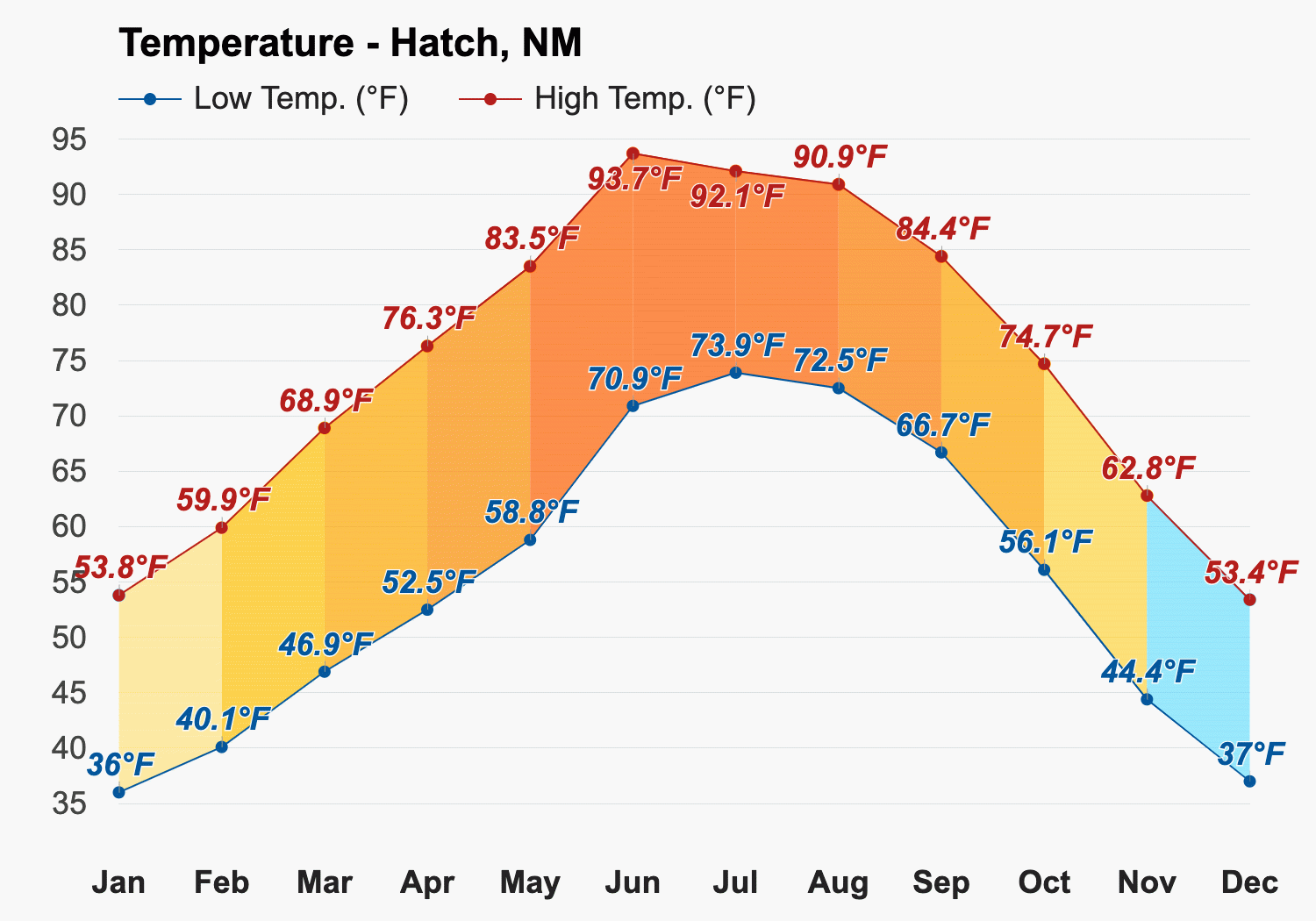
You can find out more about the climate, in the current growing season, by going to US Climate Data. The humidity levels, also important in the Hatch game, are available at Weather.com.
PICK YOUR HATCH HEAT
Hatch chiles come in about ten primary varietals. They’re mostly divided, and graded by heat level. They’re the only chile varietal to be so graded, by-the-by.
Some varietals have been replaced by better hybrids, in the last few years, that have greatly amped up the Hatch’s heat. Barker, and the new “Rattlesnake” have pushed the Hatch up on the Scoville scale to as high as 18,000 SHU.
MILD HATCH CHILES
MEDIUM-HOT HATCH CHILES
HOT HATCH CHILES
VERY HOT HATCH CHILES
Decline in Production

Production in Hatch, in spite of their product’s huge popularity, has been on the decline in recent years. Problems in finding enough labor, due to a lack of visas, and cheap substitutes from Mexico, have plagued production for years.
Now, another problem has arisen: Global warming. Erratic changes in the climate, and rainfall, have stressed out chiles, and brought more disease, and pests, that damage crops.
ARE HATCH, and “NEW MEXICO” CHILES THE SAME?
No. Chiles have been grown in several parts of New Mexico, Texas and Arizona, for hundreds of years. Many have similar tastes.
The chiles that are labeled as “Hatch,” though, have a very distinctive, more piquant taste. They should always be labeled as coming from Hatch, New Mexico.
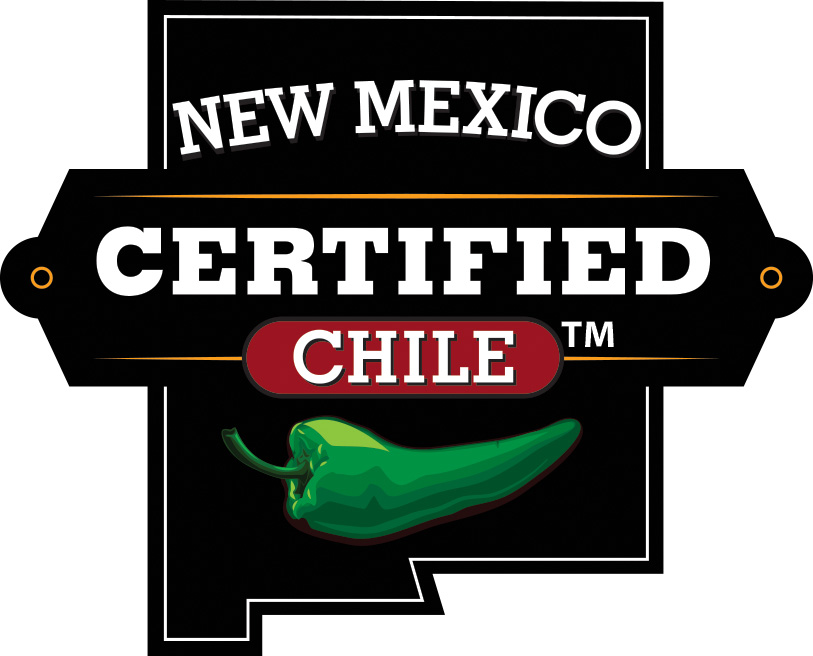
Chiles that are grown around New Mexico will be labeled as “New Mexico Chiles.” They can be excellent, but they’ll be a mix, coming from many of the valleys and fields where chiles are grown, throughout the state.
They carry the “New Mexico Certified Chile” seal, on the label.
BRAND FAKE-OUT
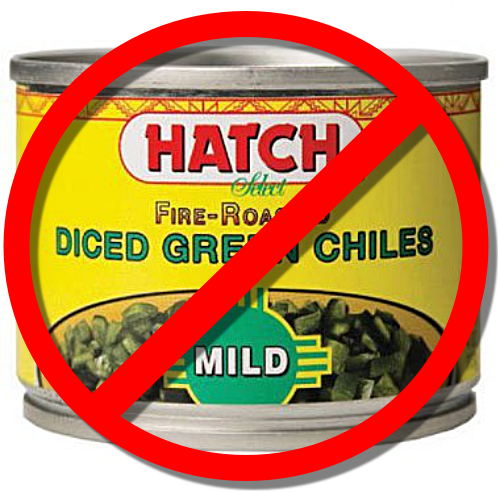
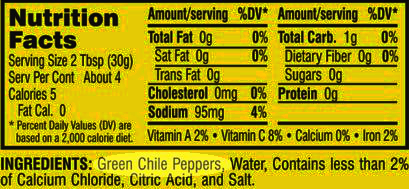
Some companies try to fool you. “Hatch Select” was the subject of a legal action by the growers of the valley with the Albuquerque packer who tried to brand the valley’s name.
Inside the can, they sell “green chiles” than can come from just about anywhere, including New Mexico, Texas, and, it was rumored, China.
You’ll still see this product in specialty markets, and a number of supermarkets as well.
The growers won, though! Today, the valley’s name, Hatch, is a protected region name, like Napa Valley, for wine, or Vidalia, Texas, for onions.
Ain’t nothin’ like the real thing, bay-bbbbbeee…
If you’re not sure, go to the GetNMChile.com, the site that tells you whether the product is legit.
IS AN ANAHEIM CHILE THE SAME AS A HATCH?
No. Yes. Well, a bit.
They’re both New Mexico cultivar chiles. When it was relocated to Anaheim, the different soil and weather conditions changed the Anaheim into a much more mild variant, more like a Cubanelle.
QUALITY SOURCES of HATCH CHILES
There are a lot of good sources to get your Hatch fix. Some are more regional than others.
If you want the real deal, shipped across the United States, fresh, and globally, frozen, I’ve been buying fresh and flash frozen chiles, for years, from the Hatch Green Chile Store, going back to the time that they used to call themselves Berridge Farms.
Young Guns is another great source, based in Hatch. They also bring you chiles right off their farm. I have not tried any of their product as of this writing, but other pro chefs, whom I know, and home chefs, swear by them.
Another big green chile producer, Bueno Foods, guarantees their frozen chopped chiles are produced in New Mexico, and labels Hatch-sourced frozen chopped chiles correctly. They sell salsas, and dry chiles online. You have to find a store that carries their frozen. It’s pretty common to find in New Mexico, Texas and Arizona. The Fall Harvest Hatch is real-deal hatch. The others are a blend of regional chiles.
Likewise the Fresh Market chain in the Eastern U.S. gets a batch of Hatch into their stores, bagged and pre-roasted, every Fall.
YOUR ANNUAL BUY
Chiles grow, as you might guess, seasonally. So what do you do, each Fall, to get the rare fresh Hatch chiles?
Order ahead, or be lucky.
Which is another reason that I like doing business with the Hatch Green Chile Store online.
They work off of pre-orders, for their fresh pods, starting in the Fall, after the previous harvest. They give you a good deal for helping them know more precisely how much to plant.
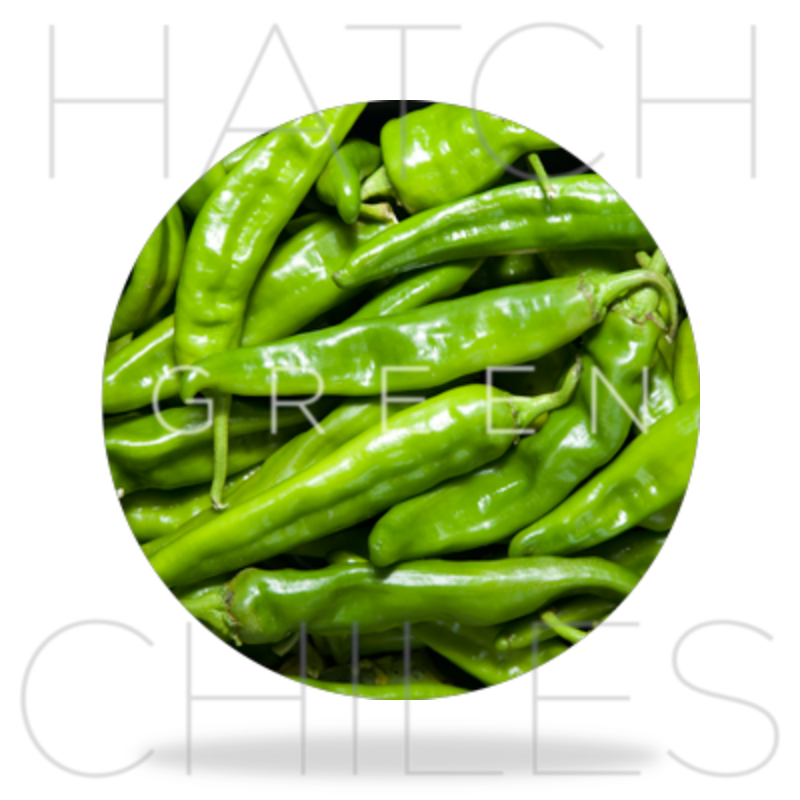
Shipped fresh, in commercial boxes, DO be mindful, if you live in a particularly hot part of the country, to pay attention to the emails that tell you when your box shipped. Left in a very hot spot, for hours, after being refrigerated, they can start to spoil quickly.
DO check your order to see if you have any rotten peppers. Remove promptly, then refrigerate the rest, until you roast.
HOW TO ROAST YOUR HATCH GREEN CHILES
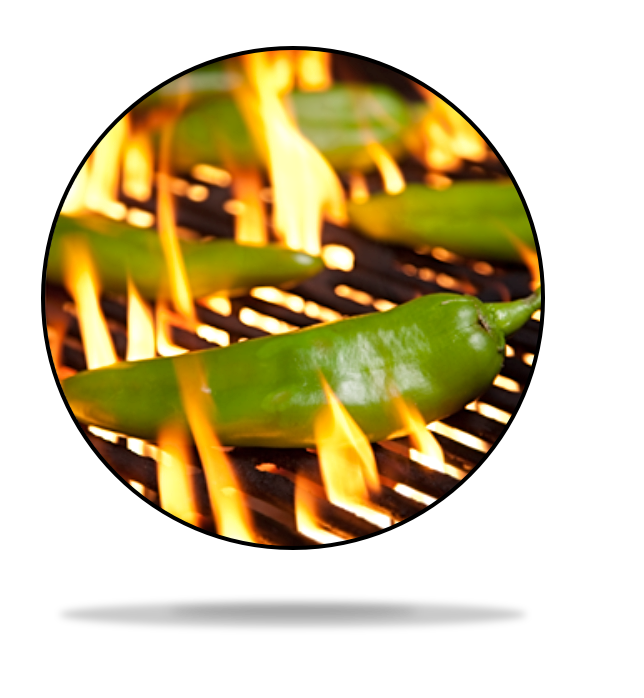
If you’re buying fresh, you can use a few for interesting adds to soups, sauces, etc. To bring out the full flavor, though, you’ll want to do your own fire roast.
Gas grills are your best bet for roasting the chiles.
Alternately, if you want a smoky Hatch chile, you can put them into a wood grill. I wouldn’t use your whole supply this way, but it does make for some interesting flavor for compound butters, and sauce toppings for meats!
HOW TO ROAST
- Put the chiles on the grill, turning them until they char on all sides.
- Steam for ten minutes.
- Cool, then peel. You can bag them whole, or chop them.
- Freeze what you won’t use within a couple of days, in vaccuum bags (Best) to avoid freezer burn, or in ZipLoc® freezer bags, if you don’t have a FoodSaver, or similar.
TYPES OF GREEN CHILE TO USE: THE WHERE, WHEN, & WHY.
Fresh
Fresh is best, because the character of home-roasted green chile comes not only from the small yet beautifully integrated natural fats/oils resident in the chile, and their texture, which, when roasted, is denser and “meatier” than its cousin, the Anaheim, or the waterlogged and biting bell pepper.
PRE-Frozen
Frozen by the supplier before shipping is next down on the list. They’re super convenient. Freezing does maintain character. The larger batches of chopped chiles, though, are processed and bagged, or put into small plastic containers, without much regard to the quality of the chiles. They often lose some of the oomph that you get in fresh chiles that you select, and freeze yourself.
Fresh/Frozen/Pre-Frozen are great in/on:
- Stews and soups
- Breakfast burritos
- Egg dishes
- Topping for burgers
- Home fries
- Pastrami gravlax or even just a nice scottish smoked salmon
- Green chile jam
- With cheese and spinach as a filling for croissant
- Mixed into a bagel dough or cornbread batter with a bit of queso blanco
- An amazing steak sauce addition or steak topping!
CANNED
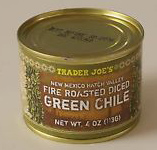
The small tins are convenient, but you trade off both taste and texture. The only fully legit ones that I’m aware of are Trader Joe’s that label as New Mexico Hatch Valley. Their “Green Chiles” are, like Hatch Select, just a hodge-podge of chiles from here and there.
BOTTLED
We’ve been impressed with the bottled chile coming out of 505 Southwestern. Much better than the canned diced, it’s not a salsa, but it can be turned into a whole variety of dishes!
It’s still not as good as fresh roasting and freezing your own, or packaged frozen, but it’s the runner-up behind those two.
Available through Walmart, in stores, and online, it’s about the best buy, per oz.
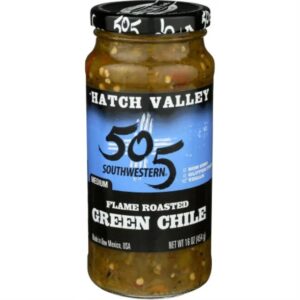
DRIED
There are a lot of providers who put out dried Hatch green chile. What can it be used for?
- Dry rubs
- Marinades
- Compound butter
- Toppings for pizza, dips, pasta arrabbiata, and more!
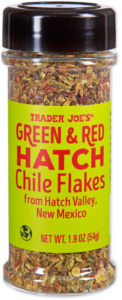
SALSAS
If you want to experience Hatch chiles without a lot of work, they’re great in pre-made salsas. A number of companies make them. Some with more Hatch chile than other ingredients. We’re partial to Trader Joe’s (Trader Jose’s) Hatch Valley Salsa. Real deal! It’s pretty easy to find in their stores.
Runners up are
COOKING WITH HATCH CHILES
There are a lot of recipes that can get a punch from Hatch chile. From humble Mac and Cheese, to an exotic green chile sorbet, as a side to my classic filet mignon, the possibilities are almost endless
The best recipes that use Hatch chiles are SIMPLE.
New Mexico’s classic green chile stew, for which I have a killer recipe, is, at the core, just potatoes, pork, salt, onion, a little garlic and Hatch chiles.
Remember that Hatch has a FLAVOR, along with the heat. Try to feature it, not bury it, when you cook with them.
PARTY ON, HATCH ADDICTS…
If you become totally hooked, check out the Hatch Chile Festival, every Fall, in New Mexico. It’s usually around the first weekend in September, where you’ll meet fellow addicts, including, on occasion, me.

